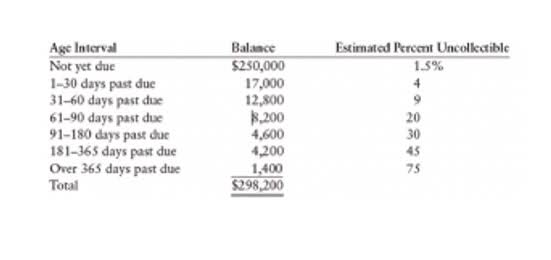
For instance, if NWC is negative due to the efficient collection of receivables from customers who paid on credit, quick inventory turnover, or the delay in supplier/vendor payments, that could be a positive sign. The net effect is that more customers have paid using credit as the form of payment, rather than cash, which reduces the liquidity (i.e. cash on hand) of the company. Another way to measure working capital is to look at the working capital ratio, which is current assets divided by current liabilities. Generally, a working capital ratio of less than 1.0 is an indicator of liquidity problems, while a ratio higher than 2.0 indicates good liquidity. Change in net working capital refers to the differences in the liquidity of the company. As in, it is a measure of if the company will be able to pay off its current liabilities with the assets in change in net working capital hand.
Growth Rate
In essence, it’s like a savings account that businesses can tap into to ensure long-term growth and adaptability in a dynamic market. A high net working capital demonstrates that a company efficiently utilizes its resources. This efficiency helps a business maximize its profitability, as it is well-prepared to handle unexpected expenses or invest in income-generating opportunities without relying heavily on external financing. Net working capital, often abbreviated as NWC, is like a financial health report card for a business. It shows the difference between what a business owns (like cash, goods, and money others owe them) and what it owes to others.

Fueling Growth and Investment:
- In our example, if the retailer purchased the inventory on credit with 30-day terms, it had to put up the cash 33 days before it was collected.
- In simple terms, working capital is the net difference between a company’s current assets and current liabilities and reflects its liquidity (or the cash on hand under a hypothetical liquidation).
- While A/R and inventory are frequently considered to be highly liquid assets to creditors, uncollectible A/R will NOT be converted into cash.
- The NWC metric is often calculated to determine the effect that a company’s operations had on its free cash flow (FCF).
- However, the more practical metric is net working capital (NWC), which excludes any non-operating current assets and non-operating current liabilities.
Changes in net working capital can have significant implications for a company’s financial health. For example, if a company experiences a positive change, it may have more funds to invest in growth opportunities, repay debt, or distribute to shareholders. Conversely, bookkeeping and payroll services a negative change may signal that a company struggles to meet its short-term obligations. Software companies generally tend to have a positive change in working capital cash flow because they do not have to maintain an inventory before selling the product. To further complicate matters, the changes in working capital section of the cash flow statement (CFS) commingles current and long-term operating assets and liabilities. Note, only the operating current assets and operating current liabilities are highlighted in the screenshot, which we’ll soon elaborate on.
Current Assets
Technically, it might have more current assets than current liabilities, but it can’t pay its creditors off in inventory, so it doesn’t matter. Conversely, a negative WC might not mean the company is in poor shape if it has access to large amounts of financing to meet short-term obligations such as a line of credit. Items affecting working capital include any changes in current assets and current liabilities. Current assets include cash (and cash equivalents), marketable securities, inventory, accounts receivable, and prepaid expenses. Current liabilities include accounts payable, short-term debt (and the current portion of long-term debt), dividends payable, current deferred revenue liability, and income tax owed within the next year. Typical current assets that are included in the net working capital calculation are cash, accounts receivable, inventory, and short-term investments.

Finally, you subtract any other financial obligations considered liabilities, such as employee wages, interest payments, and short-term loans that will come due within the next year. In our example, if these expenses amount to $1.075 million, subtract this from the $1.48 million, resulting in a net working capital of $405,000. In our example, if the retailer purchased the inventory on credit with 30-day terms, it had to put up the cash 33 days before it was collected.

Application Management
- This is a good sign for the company because it is trying to keep its money accessible and ready for use.
- As a result, the company’s net working capital increases, reflecting improved liquidity and financial strength.
- For example, if a company has $1 million in cash from retained earnings and invests it all at once, it might not have enough current assets to cover its current liabilities.
- For instance, if NWC is negative due to the efficient collection of receivables from customers who paid on credit, quick inventory turnover, or the delay in supplier/vendor payments, that could be a positive sign.
- We’ll now move on to a modeling exercise, which you can access by filling out the form below.
The net working capital (NWC) formula subtracts operating current assets by operating current liabilities. A company’s collection policy is a written document that includes the protocol for tackling owed debts. If you’re seeking to increase liquidity, a stricter collection policy could help. Cash comes in sooner (and total accounts receivable shrinks) when there is a short window within which customers can hold off on paying. Gross working capital refers to the total current assets a company has on hand to conduct its business operations, such as cash, inventory, and accounts receivable. On the other hand, the change in net working capital measures the change in a company’s working capital over a period.


For example, a service company that doesn’t carry inventory will simply not factor inventory into its working capital calculation. To calculate working capital, subtract a company’s current liabilities from its current assets. Both figures can be found in public companies’ publicly disclosed financial statements, though this information may not be readily available for private companies. For example, consider a manufacturing company facing challenges in collecting receivables from customers, leading to a significant increase in A/R.
- This situation is often temporary and arises when a business makes significant investments, such as purchasing additional stock, new products, or equipment.
- The net working capital (NWC) metric is different from the traditional working capital metric because non-operating current assets and current liabilities are excluded from the calculation.
- This measurement is important to management, vendors, and general creditors because it shows the firm’s short-term liquidity as well as management’s ability to use its assets efficiently.
- If it’s substantially negative, that suggests your business can’t make its upcoming payments and might be in danger of bankruptcy.
- Third, the company can negotiate with vendors and suppliers for longer accounts payable payment terms.
- Excessive working capital for a prolonged period of time can mean a company is not effectively managing its assets.
Understanding Working Capital
This 16% shows that the company is increasing its Net Working Capital Ratio, which means it’s putting more of its money into things that can be quickly turned into cash. This is a good sign for the company because it is trying to keep its money accessible and ready for use. To calculate this ratio, you take a business’s short-term money and compare it to all the money it has. This ratio is expressed as a percentage, which tells adjusting entries you how much short-term money exists in relation to the business’s total money. In this perfect storm, the retailer doesn’t have the funds to replenish the inventory flying off the shelves because it hasn’t collected enough cash from customers.
